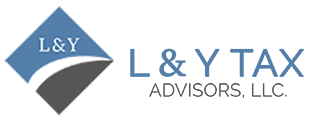
What is a Threshold in Business?
Do you know what is a threshold in business? A threshold is a particular level or point in business that establishes when a specific action needs to be performed. It acts as a standard by which you can measure significant decisions. Businesses use thresholds in various contexts, including
- Operational effectiveness
- Customer happiness
- Financial success
Businesses may remain on track and accomplish their objectives by comprehending and establishing these boundaries.
What are Business Thresholds?
The point at which a business must take action to sustain growth or efficiency is known as the business threshold. For instance:
- Before expanding, a business may establish a revenue threshold.
- To assess the efficacy of its service quality, a company may set a client retention threshold.
- To preserve product quality, a producer could set a threshold for defects.
A single threshold applies to all businesses because it varies depending on the company’s:
- Objectives
- Sector
- Market conditions
Read: Do strippers pay taxes?
Types of Business Thresholds
Depending on their requirements, several firms establish different thresholds. Among the most prevalent kinds are:
Financial Thresholds
Financial threshold established in a business to guarantee sustainability and profitability. For instance, a business can demand a minimum profit margin before funding new initiatives.
Operational Thresholds
Operational thresholds pay attention to performance and efficiency. For instance, a warehouse can establish a threshold for maximum inventory levels to prevent excessive storage expenses.
Customer Satisfaction Thresholds
Customer experience is measured using satisfaction thresholds. If client complaints reach a specific threshold, management may need to raise the caliber of services.
Employee Performance Thresholds
It assesses engagement and productivity. To evaluate employee contributions, businesses may establish a goal for minimum sales or activities accomplished.
Read: Can a CPA be a registered agent?
What are the Benefits of Business Thresholds?
There are several benefits of setting thresholds in a business:
Clear Goals
Assists companies in establishing goals and tracking their success.
Improved Decision-Making
Offers a methodical way to assess company performance.
Productivity and Efficiency
Business threshold motivates companies to cut waste and streamline processes.
Risk Management
Managing risks assists in recognizing possible hazards and implementing remedial measures before problems get worse.
Increased Accountability
This guarantees that departments and workers accomplish their goals.
Read: What is an industry accountant?
How to Set a Business Threshold?
To determine a threshold that works:
- Determine which important performance areas require observation.
- Establish quantifiable boundaries based on past performance and industry standards.
- Notify the appropriate teams of the thresholds.
- Tracking systems help keep an eye on performance.
- As business conditions change, modify the thresholds.
What is an Example of a Threshold?
One crucial contemporary threshold comes from EU VAT policy. Under Directive (EU) 2020/285, which goes into effect on January 1, 2025, Member States must establish a domestic VAT exemption threshold of €85,000 and aggregate cross-border SME revenue under €100,000 to participate in simplified reporting programs. This sets a clear revenue threshold that might make a small firm register for VAT and follow the rules for OSS/IOSS regimes.
In the same way, the UK business size criteria were modified in April 2025, and companies with sales of up to £15 million are now considered “small.” This lowers their audit and reporting requirements, a structural threshold trigger with regulatory effects.
What is a Threshold in Accounting?
A materiality threshold in accounting standards tells you whether mistakes or omissions are critical enough to change your mind. GAAP and IFRS both demand judgment in both quantitative and qualitative areas. They focus on disparities that, if fixed, may change how consumers see a company’s financial health.
Also, FASB’s ASU 2023–09, which goes into effect in 2025, makes income tax rate reconciliation disclosures more specific. Now, when resolving effective and statutory rates, organizations must use cumulative thresholds, and they may leave out reconciling items that are not important, even if they cross quantitative cut-offs.
The Role of Dynamic External Thresholds in Business Landscape
In today’s rapidly evolving regulatory and economic climate, thresholds in business often extend beyond internal performance metrics and into external compliance triggers. Regulatory thresholds can determine when a firm must adopt new
- Reporting
- Tax
- Disclosure rules
Business thresholds help regulators differentiate between small, mid-size, and large entities, enabling proportionate oversight and compliance burdens.
Moreover, external threshold triggers play a critical role in industries where legal or environmental compliance depends on crossing certain quantitative limits, such as
- Emissions
- Transaction volumes
- Occupational safety exposures
Thus, businesses must actively monitor both internal performance thresholds and externally imposed thresholds from regulations and standards. Incorporating external threshold awareness into strategic planning helps ensure that growth – when it happens – does not inadvertently expose the company to additional
- Obligations
- Compliance costs
- Regulatory scrutiny
Adaptive Thresholds: A Modern Best Practice for Risk and Quality Management
As markets and operations grow more complex, it is increasingly common for businesses to adopt adaptive thresholds – dynamic limits adjusted periodically based on changes in operations, market conditions, or performance trends. This concept borrows from quality management and process control disciplines where thresholds are not static but evolve with baseline performance data.
Adaptive thresholds allow organizations to remain agile and responsive. For example:
- Adjusting defect-rate thresholds when production volume increases
- Raising customer-satisfaction benchmarks as brand standards improve
This approach helps avoid ’threshold creep’ where old limits become meaningless as operations scale, while still maintaining accountability.
The Bottom Line
By comprehending what is a threshold in business, you can create boundaries. Make well-informed decisions. Set clear benchmarks. Businesses may increase productivity, control risks, and achieve long-term success.
Contact L&Y Tax Advisor for further assistance!


